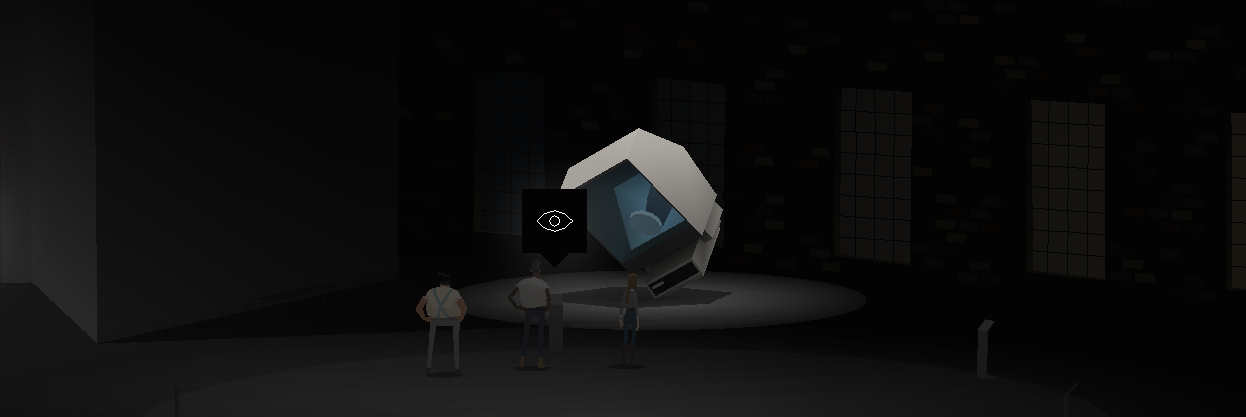Kentucky Route Zero will not be pinned down. Episodic release dates unknown. Story more tone than plot. Gameplay a mix of genres. It’s the videogame as shadowy, Southern gothic tale, blending avant-garde theatre and interactive fiction, magical realism and bureaucratic doldrums. It makes sense that so many players would cast Kentucky Route Zero as “art”—another term of nebulous definition. But in another sense, labeling Kentucky Route Zero as art is a cop-out, one that fails to actually dig into what the game does scene to scene.
“In contrast to our earlier work as collaborators, Kentucky Route Zero and the companion interludes have been an excursion in world-building and fiction, but more generally, they’re also an exploration of visual, narrative and play-forms that are drawn from all sorts of media,” Tamas Kemenczy (one third of the team at developer Cardboard Computer) told me over email. “So that speaks to some nebulous region in some Venn diagram where [art and game] audiences, along with others, overlap.”
Now, to be fair, Kemenczy and Kentucky Route Zero partner Jake Elliott do have art school backgrounds, which has probably lead people to draw conclusions in the “art” direction. Despite this, Kemenczy says, “Jake and I weren’t really interested in pursuing careers as gallery artists, and the type of work we were doing, both collaboratively and individually, wasn’t really about that sort of art practice.”

From there, Cardboard Computer was born, a game development studio that produces cultural objects that expand the notion of what a “game” can be. “You could say part of our creative process as Cardboard Computer isn’t about differentiating or essentializing videogames away from other media-forms,” Kemenczy explained. “Rather, it’s about synthesizing them together and drawing connections to intermedia experiments that have existed for quite some time.” This approach is quite evident in Kentucky Route Zero, where the game-y parts, such as dialogue choices, are stripped of their traditional feedback loops and given equal weight with a dozen other systems of varying levels of gameness.
Kentucky Route Zero actually uses the imagery and experiences of museums and galleries to assist in telling its story. In both Act II and the Limits & Demonstrations interlude, you walk characters around exhibition spaces and engage in conversations about the objects. These conversations are less about informing you about the art on display as they are about fleshing out the characters via their points of interpretation. “Meaning, themes, or narratives encoded into visual forms can often be pretty diffused, non-linear, and hard to articulate back into words,” Kemenczy told me, speaking to the implementation of these conversations. “[They] carry the potential for equally compelling and estranging experiences.” One could say the same about the experience of playing Kentucky Route Zero.
In a turn towards Kentucky Route Zero as augmented reality game (ARG), some of Kemenczy and Elliott’s artist friends actually built some of the artworks shown in Limits & Demonstrations and exhibited them at Little Berlin gallery in Philadelphia last October. While on the one hand this could be seen as trying to concretize what, for most, were fantastical digital sculptures that represented Kentucky Route Zero’s tendency toward magical realism, on the other, it’s a show that was only open so briefly that its very existence has become the stuff of whispers and largely imageless local reports. “For me the fictional installation art was a restrained expression of magical realism in visual form,” Kemenczy said. “There’s something liberating about playing fast and loose with sculptural and architectural forms that are otherwise hard to actualize.” The mysteriousness remains intact.
In a way, Kentucky Route Zero itself is an object on a pedestal (perhaps a desk or table, in this case) that provides its own grounds for interpretive discussion. And for now, the question of what Kentucky Route Zero is may be an adequate descriptor all its own.
